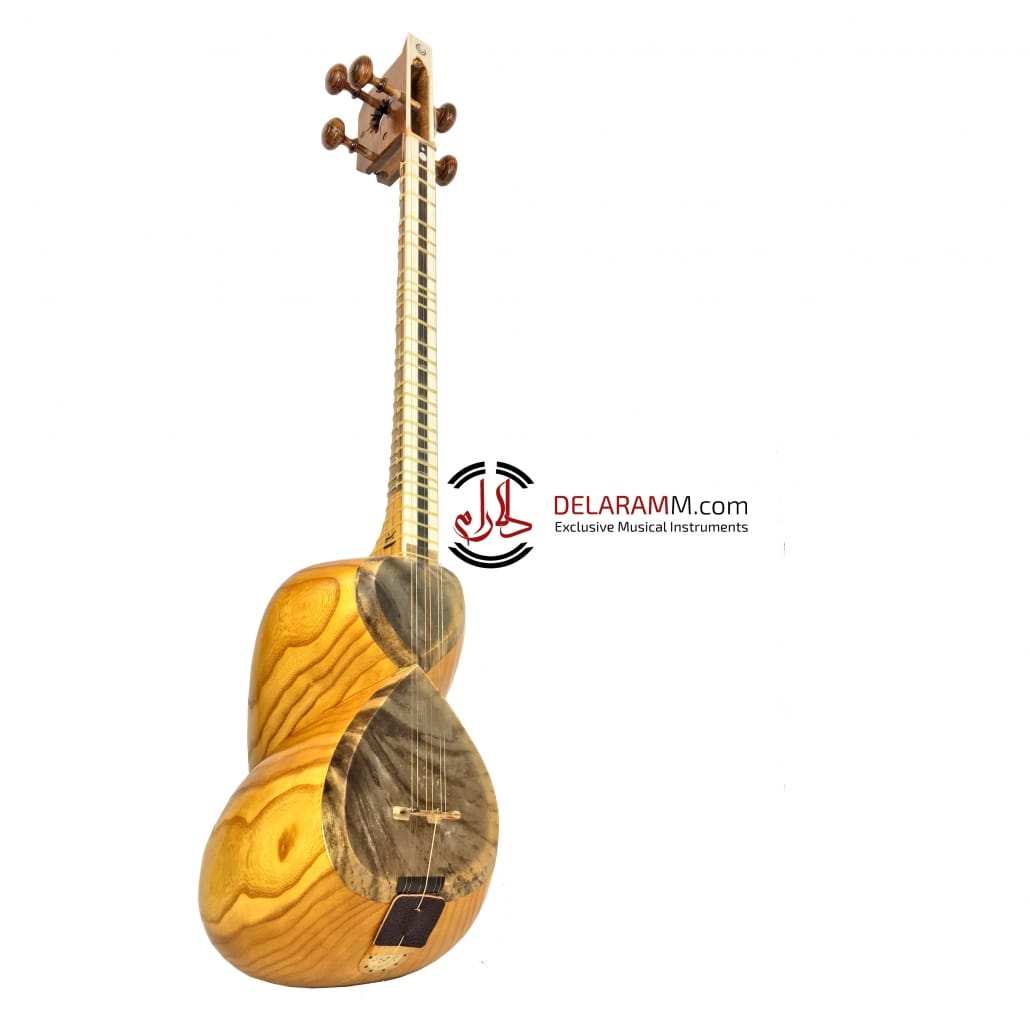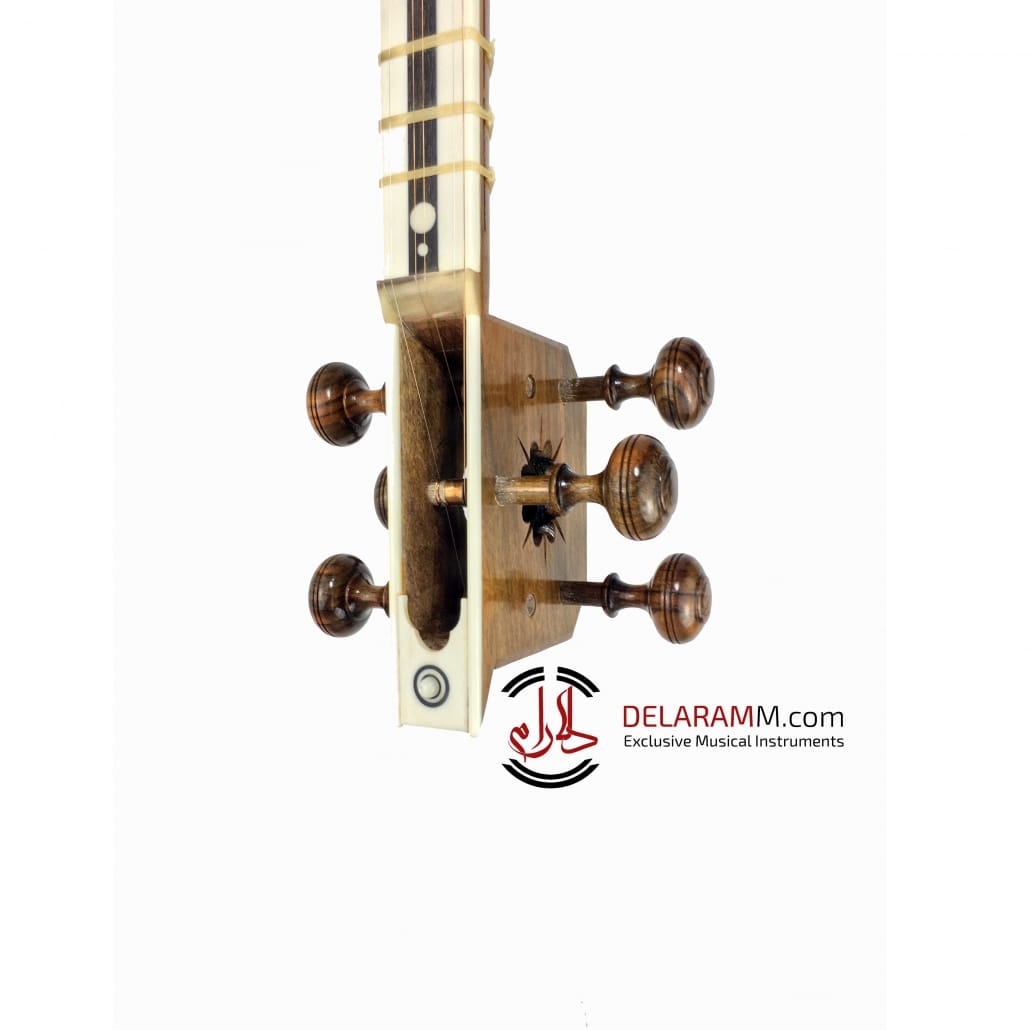All the details you need to know about how to tune a Persian tar
In the hands of a master, the strings of the Persian tar whisper secrets of ancient Persia, waving tales from a bygone era. Persian tar’s unique design and structure allow it to produce the delicate, intricate threads of sound it is renowned for. In this article, we will explore the main characteristics of this exceptional instrument and provide a comprehensive guide on how to tune a Persian tar, ensuring it sings with the true voice of its storied past.
Discovering the Persian tar: the main Properties and origin
The Persian tar is distinguished by its double-bowl body and slender, elongated neck with lengths between 45 to 50 cm. Typically crafted from mulberry wood and covered with a stretched lam-skin membrane, it features a fingerboard on the neck with twenty-five to twenty-eight adjustable frets. Six wooden tuning pegs of varying dimensions are situated at the opposite end of the neck. The overall appearance of this instrument is remarkably aesthetic, reflecting its intricate craftsmanship and cultural significance.
The Persian tar, originally named the Chahartar (meaning four strings), first appeared around the Shiraz province in central Iran. Its current sound range was developed in the 18th century. The tar has evolved over time, with significant changes to its strings and other parts. The Persian tar has six strings, with the sixth string added by Darvish Khan, a prominent Persian traditional musician born in 1872. The Persian tar was quickly adopted and modified in the Caucasia and Afghanistan regions, leading to the development of Azerbaijani tar, which is an example of these adaptions and modifications.
How to tune a Persian tar
To play the Persian tar, musicians hold it high on the chest and pluck it at the center of their body. The instrument is played with a combination of down and up strokes of a small brass plectrum of 3cm in length, known as the Mezrab, along with occasional tremolos in both directions. The pitch of the notes varies depending on the position of the fingers on the fingerboard. This intricate technique allows the Persian tar to produce its distinctive and captivating sound. However, even the best techniques cannot achieve this mesmerizing sound without properly tuning the instrument.
how to tune a Persian tar? The Persian tar can be tuned in various ways, with certain tunings being preferable for specific Dastgahs (musical modes) in Persian music. The instrument’s range spans almost two and a half octaves, providing musicians a rich palette of notes. In this instrument, the bottom pair of strings, known as the white strings, are tuned to C. The middle pair, known as the yellow strings, are tuned to G, and the fifth and sixth strings from the bottom are also tuned into C. The latter two are known as the Zang and Bam, respectively. Given this bit of complication, what is the best answer to how to tune a Persian tar?
To effectively tune a Persian tar, follow these three steps:
- The first step on how to tune a Persian tar is tuning the white strings, which are the bottom pair ones. These are tuned to C, and their pegs are located at the front lower part of the fingerboard. Rotate the first peg closer to you to adjust the first string to the lower pair. Then, rotate the second peg, which is further away, to tune the second string of the bottom pair. Use a tuner to ensure that C appears in green for over two seconds.
- Next, tune the yellow strings, which are the middle pair of strings. These are tuned to G, and their pegs are located at the back, upper part of the fingerboard. Play each string and rotate its respective peg until G appears in green for more than two seconds on the tuner. Follow the same steps for each string in this pair to ensure accurate tuning.
- Finally, tune the Zang and Bam strings, which are the upper pair of strings. These are also tuned to C, and their pegs are located at the top and bottom parts of the fingerboard. To tune the first string from the upper pair, use the peg located at the bottom of the fingerboard. Use the peg at the bottom of the fingerboard for the second string from the upper pair. Pegs of these two strings are the ones standing solo on the pegbox. Ensure that C appears in green for more than two seconds on the tuner.
By following these steps, you will ensure that your Persian tar is accurately tuned to produce its distinctive and captivating sound
Discovering the Persian tar: Fascinating facts
Persian tar is one of the most cherished musical instruments in this country. Tar is special to Iranians, musicians, and historians for many different reasons, the most important of which are:
- Microtonal capabilities: One of the fascinating aspects of Persian tar is its ability to play microtones, which are essential in Persian classical music. The frets on the neck are moveable, allowing musicians to adjust them to achieve the exact pitches required for different modes or Dastgahs.
- Cultural significance: The Persian tar is an instrument and a cultural icon in Iran. It is central to Persian classical music and is often used in traditional ensembles. UNESCO has also declared the tar a National Intangible Cultural Heritage, emphasizing its importance in Iranian cultural history.
- Music therapy: The melodies played on the Persian tar were historically believed to alleviate headaches, melancholy, and insomnia and reduce muscle and nervous spasms.
Summary
In this article, we addressed a common question: how to tune a Persian tar? We explored the main characteristics and properties of this highly valued musical instrument in Iran and gave detailed instructions on its tunning. If you are captivated by the enchanting melodies of the Persian tar, we at Delarammusic have the perfect instrument for you to elevate your musical journey. If you need a professional accessory for your tar or assistance with its stunning, or if you are looking for DVDs and books to expand your knowledge on Persian tar, we are here to assist you.



